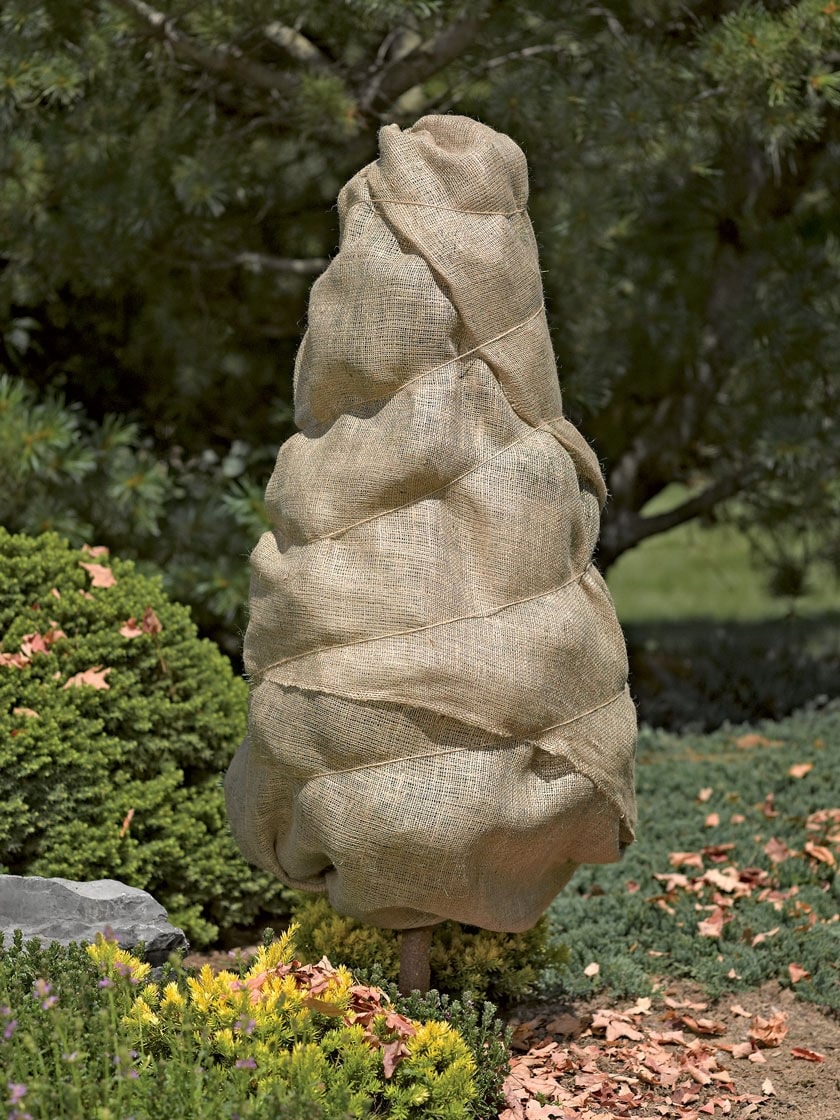- June 14, 2024
- Posted by: wellcoindustries
- Categories: Burlap, Erosion Control
Burlap, a versatile and eco-friendly fabric, is an excellent resource for gardening enthusiasts. It’s not only affordable but also biodegradable, making it a great choice for sustainable gardening. Here’s a straightforward guide on how to use burlap for plants, ensuring your garden thrives while keeping it eco-conscious.

1. Protecting Plants from Cold
Burlap can be a lifesaver during the colder months. To shield your plants from frost and harsh winds:
- Wrap Plants: Simply wrap the burlap around the plants, securing it with twine. This acts as an insulator, keeping the cold air out.
- Create a Burlap Screen: Erect a burlap screen around sensitive plants to protect them from wind and cold without completely covering them.
2. Erosion Control
Burlap is excellent for controlling soil erosion, especially on slopes:
- Lay Burlap Over Soil: Spread the burlap over the area prone to erosion. Secure it with stakes to ensure it stays in place.
- Plant Through Burlap: Cut small holes in the burlap and plant your seeds or seedlings through these holes. This helps hold the soil together while allowing plants to grow.
3. Mulching with Burlap
Using burlap as mulch can help retain soil moisture and prevent weeds:
- Cover Soil: Lay the burlap over the soil around your plants. It will decompose over time, adding organic matter to the soil.
- Water Through Burlap: The fabric is permeable, so you can water your plants directly through the burlap.
4. Supporting Climbing Plants
Burlap can provide support for climbing plants:
- Create a Trellis: Attach burlap to a frame or fence to create a natural trellis. Climbing plants like peas or beans will cling to the fabric as they grow.
- Guide Plant Growth: Use strips of burlap to gently tie plants to supports, guiding their growth without damaging the stems.
5. Burlap Planters
For a rustic and eco-friendly look, consider using burlap as planters:
- Make Burlap Sacks: Fill burlap sacks with soil and plant directly in them. They are great for growing herbs, flowers, and small vegetables.
- Drainage and Aeration: The porous nature of burlap ensures good drainage and aeration, promoting healthy root growth.
Tips for Using Burlap in Gardening
- Choose Natural Burlap: Ensure the burlap is untreated and free from chemicals.
- Reuse and Recycle: Burlap can be reused multiple times before it decomposes.
- Secure Properly: Always secure burlap firmly to prevent it from being blown away by wind.
By incorporating burlap into your gardening practices, you can create a healthier, more sustainable environment for your plants. It’s a simple, cost-effective, and environmentally friendly solution that can benefit your garden in numerous ways.
